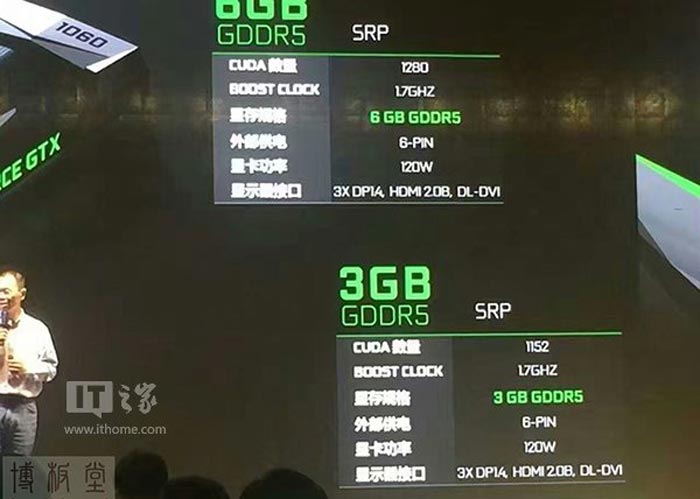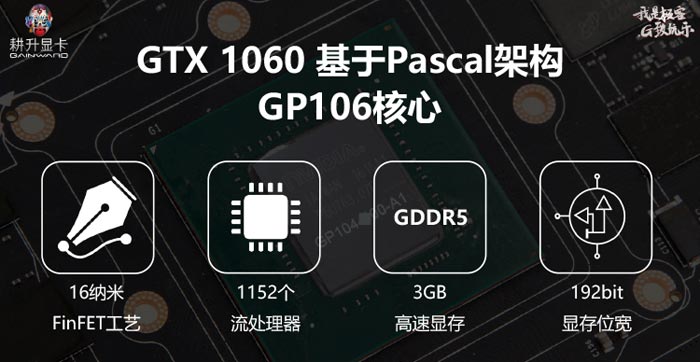Earlier rumours, concerning the 3GB version of the Nvidia GeForce GTX 1060 graphics card, look like they were right. There had previously been talk about the Nvidia GeForce GTX 1060 3GB offering cut down specifications, beyond the headlining amount of fitted memory. As is the case with such early information, things were rather unclear, sources were dubious, and others thought the cut down specs may be representative of a GTX 1050 card, or just plain wrong.

Now information has come to light from an Nvidia event in China that makes the differences between the Nvidia GeForce GTX 1060 6GB and 3GB versions very clear. The cards are identical apart from the obvious graphics RAM fitted (evident in their names) and that the cheaper card will have fewer CUDA cores. Describing this difference in more detail; the 6GB card had 1,280 CUDA cores spread across 10 streaming multiprocessors, the 3GB card has 1,152 CUDA cores across 9 streaming multiprocessors. Thus the number of texture mapping units is also reduced from 80 to 72.

Elsewhere, as you can see from the slides, the 3GB variant is a match to its 6GB big brother in specifications and component speeds. The spec reduction exercise is obviously Nvidia designing the 3GB variant for its proposed $199 price point. Such a price will pit it right into the centre of AMD's RX480 and RX 470 lineup. It won't be so long until this 3GB variant becomes available, with AIC partner made models starting to emerge in September, says the source.













